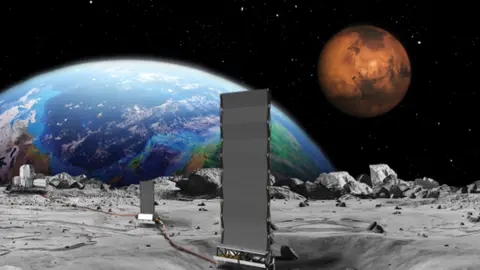Plans are underway to establish a nuclear power source on the Moon by the end of the decade, as part of efforts to support a permanent human presence on the lunar surface. The initiative, led by US authorities, seeks to address the challenges of sustaining long-term habitation in an environment where solar energy alone is insufficient.
The push for nuclear energy on the Moon comes as multiple nations, including China and Russia, accelerate their own lunar exploration programs. Concerns have been raised that geopolitical competition could influence the timeline, with some officials warning that rival nations might attempt to secure exclusive zones on the Moon.
A senior US official overseeing space policy reportedly urged rapid development of the project, emphasizing its importance for future missions to Mars and national security in space. Private firms have been invited to submit designs for a compact reactor capable of generating at least 100 kilowatts—far less than terrestrial wind turbines but sufficient for initial lunar operations.
Scientists argue that nuclear power is the most viable option for continuous energy supply on the Moon, where sunlight is available for only two weeks at a time, followed by an equal period of darkness. “Solar panels and batteries simply can’t meet the demands of a lunar base,” explained one expert. “Nuclear energy isn’t just preferable—it’s essential.”
Despite optimism about the technical feasibility, significant hurdles remain, including regulatory approvals for launching radioactive materials and securing adequate funding. Recent budget cuts to space programs have cast doubt on whether the 2030 target is achievable.
Critics also warn that the project risks being overshadowed by political rivalries rather than scientific collaboration. “A narrow focus on national interests could undermine broader goals of space exploration,” cautioned a planetary scientist.
The initiative coincides with ongoing discussions about international guidelines for lunar activities, including the establishment of safety zones around operational sites. Some fear these zones could be misused to assert territorial claims, complicating future cooperation.
With key missions, such as planned crewed lunar landings, already facing delays, questions linger over whether the necessary infrastructure—including transportation and habitation modules—will be ready in time to make use of a lunar reactor.
As the global space race intensifies, the Moon is emerging not just as a scientific frontier but as a potential arena for geopolitical competition—raising concerns about how humanity will govern its activities beyond Earth.









